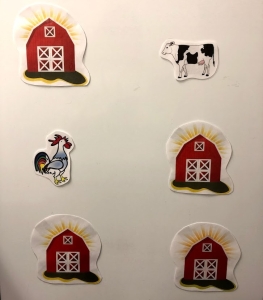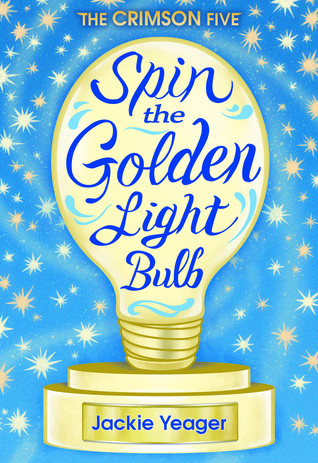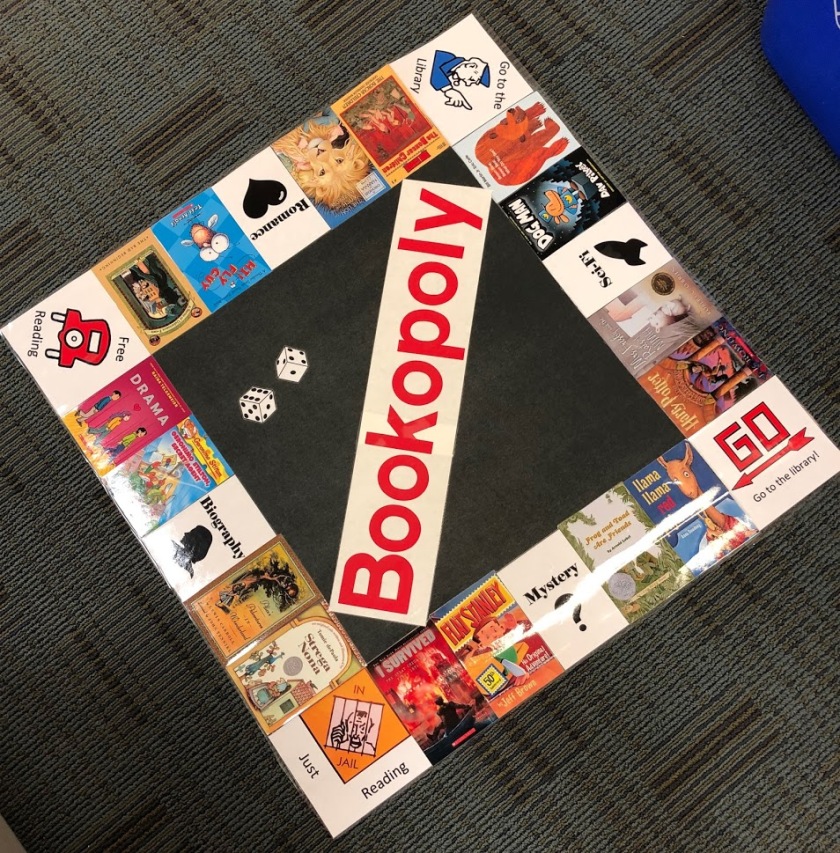Toddler Storytime – 4/24/19 – FARMS
- Hello Rhyme – Say Hello
- This is a great rhyme for saying hello because we get to do it in so many fun ways!
- Song – Fingers, Nose and Toes by Cedarmont Kids
- This is a new one for me, so we will see how it goes. Seems to have some fun stretching and movements.
- Transition Rhyme – Ten Fingers
- I haven’t done a purely toddler storytime in a while, so I wanted to have a transition rhyme. I can’t find where I got this one from, so if it’s you, let me know!
I have ten fingers hold up both hands, fingers spread
And they all belong to me, point to self
I can make them do things
Would you like to see?
I can shut them up tight make fists
I can open them wide open hands
I can put them together place palms together
I can make them all hide put hands behind back
I can make them jump high hands over head
I can make them jump low touch floor
I can fold them up quietly fold hands in lap
And hold them just so.
- ASL – COW / PIG / DUCK / SHEEP

- In getting into a theme, I like my group a few American Sign Language signs to go with the theme. This is great to help frustrated little ones communicate but it also helps make our world a better place by fostering communication with each other. We have a large deaf community near my library so learning just a few signs are great! I usually use Signing Savvy or Baby Sign Language.
- Rhyme – When Cow Gets Up in the Morning
- I may or may not break out the puppets for this one.
When cows get up in the morning, they always say hello.
When cows get up in the morning, they always say hello.
And what do they say? Mooooooooo
And that is what they say.
(Ducks, Pigs, etc.)
- Book/Puppets – The Cow Said Neigh! By Rory Feek
- If I don’t use the puppets for the previous one, I may use it here. This is a newer book and is so much fun about the animals mixing up their sounds.
- Rhyme/Magnet – Whose in my barn?

- I did this one a while back. I basically added magnets to different animals and hid them behind my bars. Then I described the animals and let the kids should out the answers.
- Song – Old MacDonald Had a Farm by The Hit Crew
- I’m not sure if we will clap or sing or what but you can’t have a farm theme without this gem!
- Rhyme – Ten Fluffy Chicks
- Really breaking out the magnet board this week. This is one from Sunflower Storytime and it has a nice rhyme but also works with counting.
Five eggs and five eggs (Add a clutch of eggs each time you say “five eggs”)
And that makes ten
Sitting on top (Add the hen)
Is Mother Hen
Cackle cackle cackle (Clap hands as you say Cackle!)
What do I see?
Ten fluffy chickens (Switch eggs for chicks.)
Yellow as can be.
- Book – Sheep in a Jeep by Nancy Shaw

- Who doesn’t love these silly sheep! A small book but that just means you have to be more expressive.
- Rhyme – BINGO
- We are going to do this the classic way, replacing a letter with a clap each time.
- Song/Shakers – The Shimmie Shake! by The Wiggles
- Thank you Wiggles for this one. It’s perfect to shake to!
- Rhyme – If You’re Happy and You Know It
- I also like to end my storytimes with this rhyme to see how happy everyone is.
- Goodbye Rhyme – Say Goodbye
- I like to start and end storytime with versions of the same rhyme. We use the same words as when we said hello, except we exchange “hello” with “goodbye.”
- Song – Clean It Up by Laurie Berkner
- Clean up time!
- Song – Goodbye, So Long, Farewell by K. Guilmartin
- I will always put this one on in the background as everyone leaves because I just love it!
How’d it go:
Man, haven’t done a purely toddler storytime in a while. I would probably change a few things next time and maybe add another song, since we got a little restless. But other than that, all went well.
That’s all for now!
-M-









